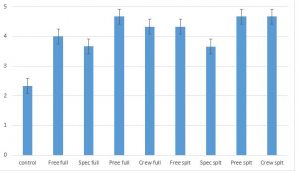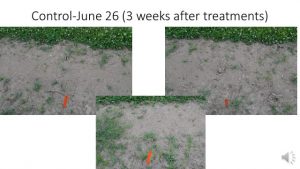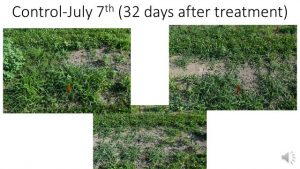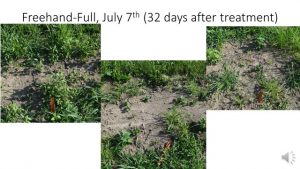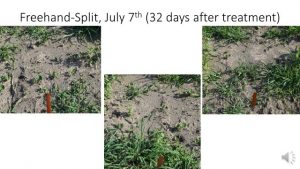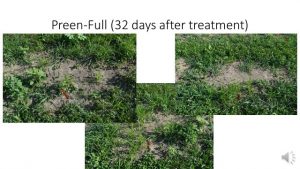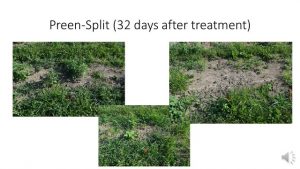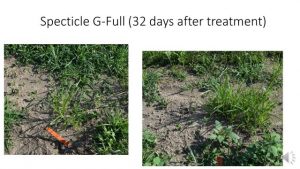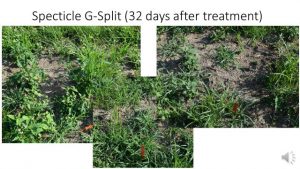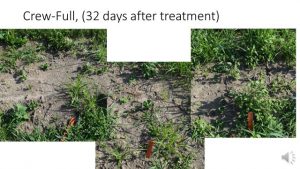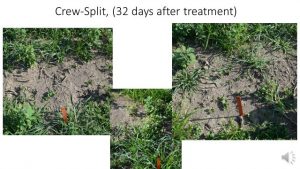Preemergence herbicides should be the primary tool for a landscape weed control program. The primary reasons to develop a strong preemergence herbicide program are 1) Decreased phytotoxicity (plant damage) to landscape plants and 2) Reducing the amount of times required to visit a property. With the difficulty of attracting quality labor in our industry, time could be spent on other projects instead of repeatedly visiting a property to apply postemergence herbicides. Preemergence herbicides won’t eliminate the need for postemergence applications, but they will greatly reduce the number of weeds present for an extended period of time during the busy season.
A question I receive multiple times per year covers multiple iterations of the efficacy (how well the product works) of a preemergence that is applied after the spring germination window. Many landscape installations will occur throughout the season, so there are multiple occasions where the landscape beds won’t even be created during the spring germination period. My answer to whether this will work is typically, ‘Probably’. That’s not a great answer, but the knowledge is limited in how much of a difference an application after the germination window will make in a landscape.
A trial that addresses these issues began earlier this year. This trial address both the efficacy of a split application and determining the correct answer as to the efficacy of applying a preemergence herbicide after the spring germination window.
- Figure 1. Effects of four herbicides (Freehand, Specticle G, Preen, and Crew) on efficacy of late application and full vs. split applications.
This study contains five treatments: Control (no herbicide), Freehand (dimethenamid-P and pendimethalin), Specticle G (indaziflam), Preen (trifluarlin), and Crew (isoxaben and dithiopyr). Each of these had a full rate and a half rate, which represents the efficacy of the full and split applications. Plots were cultivated the week of May 25th, with herbicide treatments applied June 5nd. The split applications were reapplied on June 26th. Data were taken at June 26th (no significant differences) and on July 7th (differences between all herbicides vs. control and no differences between split and full applications). This trial will be repeated in 2021 to evaluate the validity of these data.
Results of this trial suggests two major recommendations that landscapers can apply to their properties.
- A split application (half rate followed by half rate three weeks later) controls weeds as effectively as the full rate, while providing extended control over the full rate.
- If you miss the spring germination window of summer annuals or install a landscape after the spring window, applying preemergence herbicides will still provide significant control.
Pictures from all the plots from the trial are below to give you an idea of the amount of control from each treatment.
If you would like to discuss your weed management plan or if you have general landscape questions, don’t hesitate to reach out to me at daniel38@purdue.edu
All of the articles related to weeds can be found on our site here: https://www.purduelandscapereport.org/?s=weed
- Figure 2. Control (no herbicide) three weeks after treatments.
- Figure 3. Control (no herbicide) 32 days after treatment.
- Figure 4. Freehand, full rate, 32 days after treatment.
- Figure 5. Freehand, split rate, 32 days after treatment.
- Figure 6. Preen, full rate, 32 days after treatment.
- Figure 7. Preen, split rate, 32 days after treatment.
- Figure 8. Specticle G, full rate, 32 days after treatment.
- Figure 9. Specticle G, split rate, 32 days after treatment.
- Figure 10. Crew, full rate, 32 days after treatment.
- Figure 11. Crew, split rate, 32 days after treatment.
